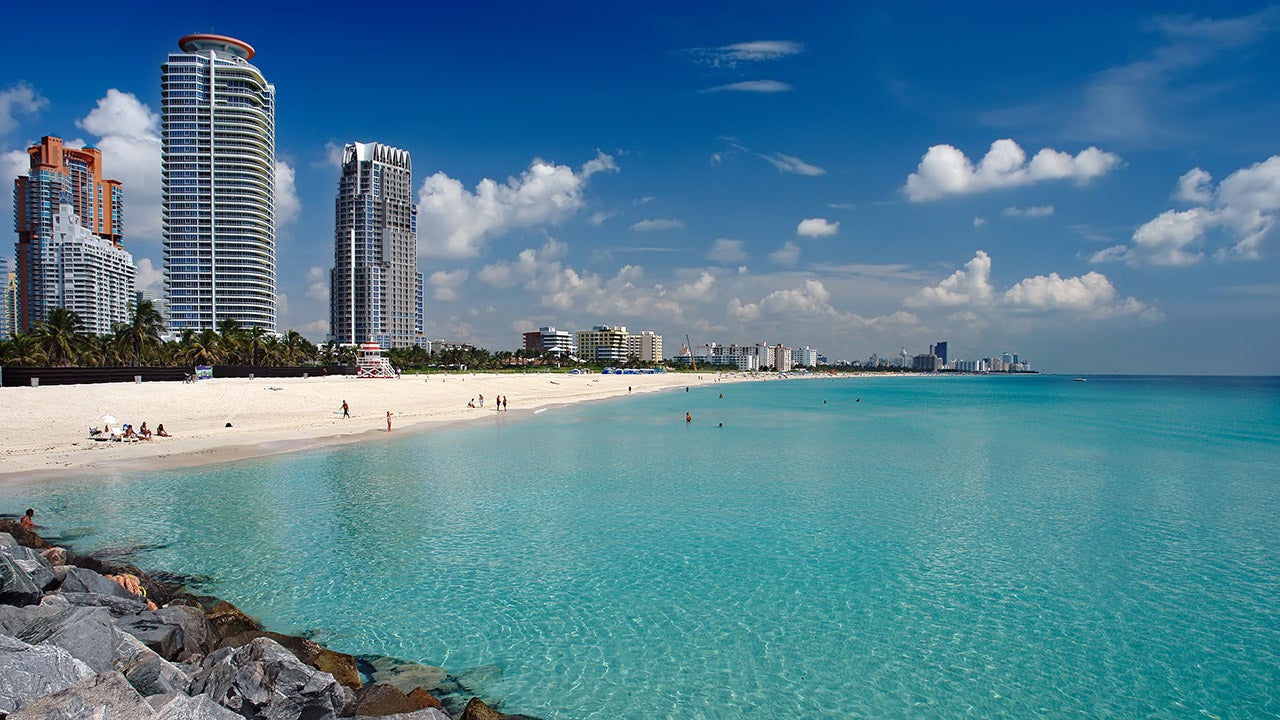Eleni Myrivili is a senior fellow and senior consultant on heat resilience for the Arsht-Rock Resilience Center, a program of the Atlantic Council. She is also chief heat officer for the City of Athens, Greece. From 2017 through 2019, Myrivili served as Athens’s deputy mayor for urban nature and climate resilience. She will take the stage at Aspen Ideas: Climate in a session called ‘It’s Getting Hot in Here.’ Register for the event here.
Climate change is a threat to urban and rural communities—as well as the ecosystems on which we depend. Severe weather events are becoming more frequent. Yet while we’ve discussed global warming for decades, we have not been planning for extreme heat. It may not come with the drama of streets turning into rivers or roofs sent flying, but extreme heat is the deadliest climate event.
Heat is insidious—a silent killer—and it is increasingly creating dangerous public health conditions in our cities. This is especially true in urban areas with low-quality housing and infrastructure. In every city around the world, these socioeconomically disadvantaged districts are the ones with fewer or no trees. As a result, they reach the highest temperatures. City glass, cement, and asphalt absorb and store heat and then radiate it at night. Car and air-conditioning pollution only add to the mix, creating temperatures that our bodies and built environments are not made for. We need to build urban heat resilience on a global scale—we must figure out how to make our cities cooler and greener and protect those most at risk. This is possible through three steps: awareness, preparedness, and redesign.
Raising awareness and getting people to take heat exposure seriously is not a simple task. This summer in Athens, with the technical assistance of the Adrienne Arsht-Rockefeller Foundation Resilience Center, we will pilot what we believe is a game-changer: heatwave categories just like hurricanes and other natural disasters. The real innovation lies in implementing a heatwave categorization methodology based on correlating past meteorological and health data, specific to Athens. Our heatwave categories include the percentage of risk to human life that the predicted heatwave will have. This will be immensely important for policymakers—vulnerability and exposure are already calculated.
Our categorizing describes the scale of the challenge in human terms, prescribing the level of mitigation needed. This allows for higher-impact public messaging, while health-based metrics can lend to a more efficient and targeted allocation of government resources targeted to the most vulnerable populations in the effort to save lives. Cities around the world are already implementing preparedness short-term policies that aim to prevent heat-related illnesses and deaths. Miami, prominent among them, has undergone a rigorous stakeholder engagement, created a Heat Health Task Force, and is currently expanding its emergency management and healthcare capacity. The city is also increasing access to affordable and efficient air-conditioning, and setting up weatherization and housing retrofit programs.
But redesigning our cities to be heat-resilient is the real task at hand. Heat-resilient cities must recollect and begin using the pre-fossil-fuel wisdom of architectural design and materials fine-tuned to local weather conditions. They must invest in new materials and technologies that are not carbon-dependent and create cooler urban surfaces. They must reassess and create diversity and redundancies in critical resources such as water, food, and energy. But first and foremost, heat-resilient cities must bring nature into the urban fabric: dramatically increase the number of trees and tree cover, support biodiversity, and make soil and water more prominent elements of our public spaces.
We need to turn a large part of the hard, grey surfaces of the city—those that absorb and radiate heat—into water-permeable sustainable ecosystems. Landscape architects, rather than urban planners or architects, must take the lead this time. Scientists that know ecosystems and their functions, thermodynamics, and land remediation should design our new urbanity. Fortunately, cities are already on their way. In Colombia, Medellín has designed 36 green corridors. The surrounding areas have seen temperature reductions of up to 4°C. In South Korea, Seoul restored the Cheonggyecheon stream which created 5.8 kilometers of water and a nature corridor. This decreased the temperature around it up to 5.9°C while also creating jobs and increasing business development. Paris, France is using the water of the Seine to provide free cooling to adjacent housing, and Melbourne, Australia is championing ecosystems aimed toward a healthier urban environment.
Cities and those who run them need to set goals, monitor, and evaluate the impact of our actions. We must see what works best and how we can quickly scale things up. There are several systems of metrics developed by international organizations as well as specific metrics developed locally by cities implementing resilient strategies. However, these are not standardized and are often difficult to use. The Arsht-Rockefeller Resilience Center is currently developing a set of metrics that cities can easily implement to measure the impact of their heat mitigating efforts.
We are in the midst of a war for the future of the planet and we must engage all of our forces to win it. The devastating impacts of climate change are already reaching across all sectors of our society from health and wellbeing to infrastructure and logistics. The climate crisis must be elevated to a national security issue in countries across the globe, streamlining efforts from multilateral organizations to national governments to local authorities. It’s about the survival of hundreds of species on this planet—including ours.
The views and analysis expressed in this article are those of the author and do not necessarily represent those of the Aspen Institute.
This piece is part of In Focus: Rising to the Climate Challenge, a multimedia informational campaign that draws on the expertise of Institute programs. We look at four main facets of the climate change issue—labor and the economy, youth and education, public health and safety, and communities. To get campaign updates and other news from the Aspen Institute in your inbox, sign up for our newsletter.


